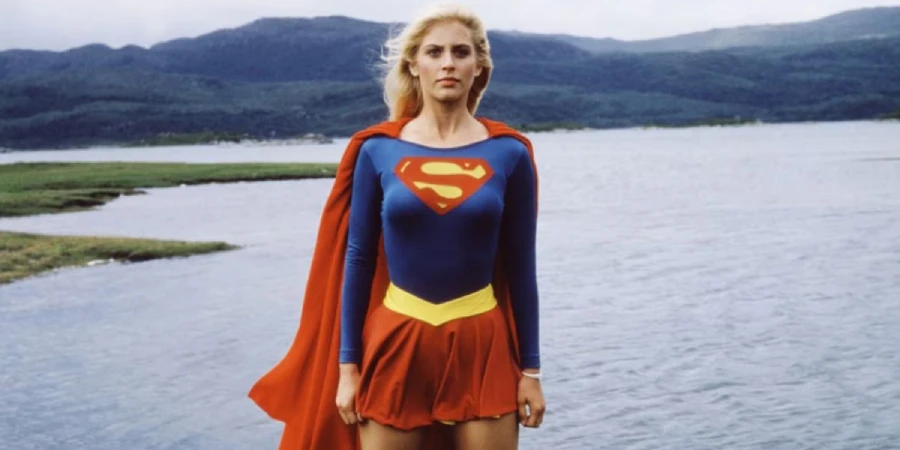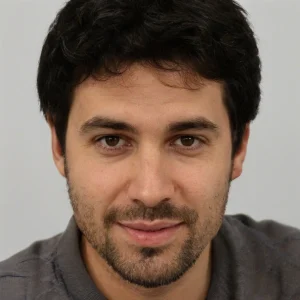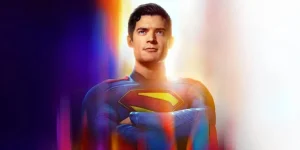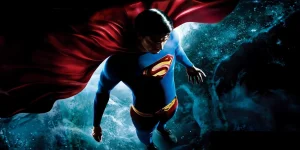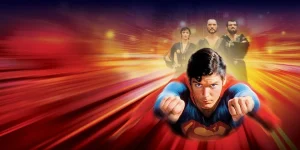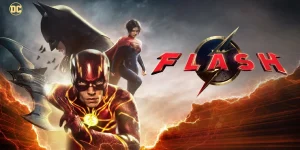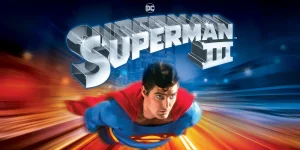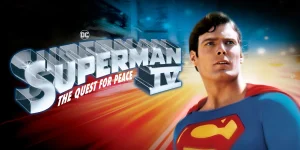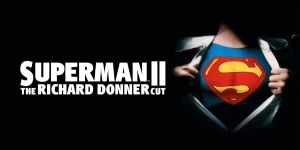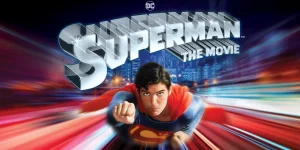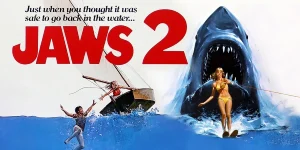Supergirl (1984), directed by Jeannot Szwarc, is a spin-off from the original Superman film series. Starring Helen Slater as the titular character, it attempts to expand the Kryptonian mythos beyond Kal-El (Superman) and focuses on his cousin, Kara Zor-El. Despite being a financial flop and critically panned at release, the film has since gained a small cult following for its campy tone, adventurous spirit, and ambitious take on a female superhero during a time when few existed on screen.
Table of Contents
ToggleDetailed Summary
The Story Begins on Argo City
The film opens in Argo City, a Kryptonian colony that survived the destruction of Krypton and now exists in a separate dimension called Inner Space. Kara Zor-El (Helen Slater) lives here with her family, including her mentor and guardian Zaltar (played by Peter O’Toole), an eccentric artist/scientist.
Zaltar shows Kara a powerful artifact known as the Omegahedron, a mysterious energy source that powers Argo City. Unfortunately, Kara accidentally loses it through a dimensional rift, and it ends up on Earth. Since the Omegahedron is vital to Argo City’s survival, Kara decides to retrieve it.
Arrival on Earth and Becoming Supergirl
Traveling through the rift, Kara arrives on Earth, where the yellow sun gives her powers similar to Superman. She takes on the secret identity of Linda Lee, a student at an all-girls school in Midvale. She quickly befriends Lucy Lane (sister of Lois Lane), played by Maureen Teefy, and tries to adjust to her new life while secretly searching for the Omegahedron.
Meanwhile, the Omegahedron is discovered by Selena (Faye Dunaway), a power-hungry witch dabbling in black magic. She sees it as her ticket to world domination. Using its powers, Selena builds a castle-like fortress in a carnival funhouse, recruits a bumbling warlock named Nigel, and begins her journey to ultimate control.
The Conflict Escalates
Selena becomes obsessed with a man named Ethan, played by Hart Bochner, and uses a love spell on him, intending for him to fall in love with her. However, he ends up falling for Linda (Supergirl), creating a love triangle that fuels Selena’s jealousy.
As Selena’s power grows, she terrorizes Midvale and captures Ethan. Supergirl is forced to reveal herself to confront the evil sorceress. The battle intensifies, and Selena eventually manages to imprison Kara in the Phantom Zone, a bleak and dangerous prison dimension used in Kryptonian lore.
Escaping the Phantom Zone
Trapped without her powers, Kara encounters Zaltar, who had exiled himself out of guilt. In a haunting and visually surreal segment, they try to escape the Phantom Zone. Zaltar sacrifices himself to help Kara return to Earth, giving her the emotional resolve and strength to fight Selena.
Final Battle with Selena
Back on Earth, Supergirl challenges Selena, who now commands demonic forces and the full power of the Omegahedron. In a climactic showdown involving telekinesis, dark magic, and raw willpower, Kara manages to reverse Selena’s spell and banish her and her sidekick Bianca into the Phantom Zone using the very forces they tried to control.
Supergirl then returns the Omegahedron to Argo City, saving her people and completing her mission.
Movie Ending
In the final scenes, Supergirl flies back to the dimensional gateway, taking the Omegahedron with her. Argo City is shown coming back to life, its systems reactivating. Kara receives a hero’s welcome back home, though her future is left open-ended—there’s no sign of Superman, and the movie doesn’t hint at her returning to Earth.
The love interest, Ethan, is left behind on Earth without real resolution, and his spell-induced romance fades without deeper reflection. There’s no significant epilogue with Earth characters—Supergirl’s departure is quiet and final, giving the film an oddly melancholic tone, despite the “victory.”
Are There Post-Credits Scenes?
No, Supergirl (1984) does not feature any post-credits scenes. This was typical of films at the time, especially before the superhero genre adopted the now-common practice of teasing sequels or extra content in the credits.
Type of Movie
Supergirl is a science fiction fantasy adventure film with strong elements of superhero fiction. It blends the superhero mythos with occult magic, making it one of the stranger entries in the extended Superman universe.
Cast
- Helen Slater as Kara Zor-El / Supergirl / Linda Lee
- Faye Dunaway as Selena
- Peter O’Toole as Zaltar
- Mia Farrow as Alura (Kara’s mother)
- Brenda Vaccaro as Bianca (Selena’s assistant)
- Hart Bochner as Ethan
- Maureen Teefy as Lucy Lane
- Marc McClure as Jimmy Olsen (reprising his role from the Superman films)
Film Music and Composer
The score was composed by Jerry Goldsmith, who was initially set to score the original Superman (1978) before John Williams stepped in. His music for Supergirl is grand, whimsical, and heroic, fitting for Kara’s journey. The main theme, while not as iconic as Superman’s, is a powerful composition that gives the film a distinct musical identity.
Filming Locations
- Pinewood Studios, England: Most of the film’s interior scenes, including Argo City and Selena’s lair, were shot here.
- Lake District, Cumbria, UK: Used for exteriors representing Selena’s mountain fortress.
- Chicago and the UK countryside: Used for small-town scenes meant to represent Midvale.
The mix of British landscapes and studio sets creates a unique, fairy-tale quality to the film, emphasizing the otherworldly feel of Kara’s journey.
Awards and Nominations
The film did not receive any major awards or nominations. It was generally considered a critical failure, though it has since become a campy cult favorite in niche superhero and retro film circles.
Behind the Scenes Insights
- Christopher Reeve was originally meant to cameo as Superman but dropped out, forcing the writers to explain his absence awkwardly.
- Helen Slater performed many of her own stunts and trained extensively for wirework and flight sequences.
- The film’s budget ballooned due to complex visual effects, especially scenes involving flying and the Phantom Zone.
- Faye Dunaway and Peter O’Toole were cast to lend star power, but both reportedly clashed with the production team.
Inspirations and References
- The film is inspired by the DC Comics character Supergirl, first appearing in Action Comics #252 (1959).
- It draws from Silver Age comic storytelling, where Supergirl often operated independently of Superman.
- The idea of Argo City surviving in another dimension is adapted directly from comic lore.
Alternate Endings and Deleted Scenes
- An extended version of the film was released on home video, featuring over 20 minutes of additional footage. This includes more scenes of Kara adjusting to Earth and additional character development for Selena.
- In one alternate ending considered during production, Kara would stay on Earth and join Superman, but this was scrapped due to Christopher Reeve’s absence and the film’s standalone direction.
Book Adaptations and Differences
A novelization of the film was published, which includes more background on Argo City and Selena’s past. It delves deeper into the emotional and psychological stakes for Kara, filling in gaps the film leaves open. The book also expands on Ethan’s character, giving him more depth and resolution than in the movie.
Memorable Scenes and Quotes
Key Scenes
- Kara’s first flight, discovering her powers under the yellow sun.
- Supergirl’s entrapment in the Phantom Zone — a visually eerie and emotional sequence.
- The final magical battle between Supergirl and Selena, blending superhero action with sorcery.
- Bubble-like Argo City floating in Inner Space, with its dreamlike aesthetic.
Iconic Quotes
- Zaltar: “I wanted to create something beautiful, and I failed.”
- Selena: “Power. Absolute power. It’s mine now.”
- Supergirl: “I am Kara of Argo City. Daughter of Alura and Zor-El. And I don’t scare easily.”
Easter Eggs and Hidden Details
- Jimmy Olsen’s presence connects the film to the Superman cinematic universe.
- The character Lucy Lane is a nod to DC Comics continuity—she later becomes significant in Supergirl lore.
- The film features Kryptonian writing on various devices, accurate to DC’s pre-Crisis comic designs.
Trivia
- Helen Slater would later appear in the CW’s Supergirl series as Eliza Danvers, Supergirl’s adoptive Earth mother.
- The film was released the same year as Ghostbusters, which greatly overshadowed it in the fantasy market.
- Despite the film’s performance, Helen Slater received critical praise and was nominated for a Saturn Award for Best Actress.
Why Watch?
While flawed, Supergirl (1984) is a unique time capsule of 1980s superhero filmmaking. It’s a mix of fantasy, science fiction, and female-led adventure that dared to do something different long before the modern superhero boom. If you love camp, vintage effects, and earnest performances, it’s worth a watch—especially for fans of DC lore and underdog superhero stories.
Director’s Other Movies
- Jaws 2 (1978)
- Somewhere in Time (1980)
- Santa Claus: The Movie (1985)
Recommended Films for Fans
- Superman (1978)
- Wonder Woman (2017)
- The Legend of Billie Jean (1985)
- Flash Gordon (1980)
- The Last Starfighter (1984)
- The NeverEnding Story (1984)

